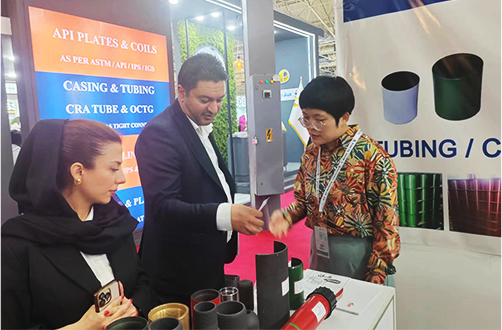- Afrikaans
- Albanian
- Amharic
- Arabic
- Armenian
- Azerbaijani
- Basque
- Belarusian
- Bengali
- Bosnian
- Bulgarian
- Catalan
- Cebuano
- Corsican
- Croatian
- Czech
- Danish
- Dutch
- English
- Esperanto
- Estonian
- Finnish
- French
- Frisian
- Galician
- Georgian
- German
- Greek
- Gujarati
- Haitian Creole
- hausa
- hawaiian
- Hebrew
- Hindi
- Miao
- Hungarian
- Icelandic
- igbo
- Indonesian
- irish
- Italian
- Japanese
- Javanese
- Kannada
- kazakh
- Khmer
- Rwandese
- Korean
- Kurdish
- Kyrgyz
- Lao
- Latin
- Latvian
- Lithuanian
- Luxembourgish
- Macedonian
- Malgashi
- Malay
- Malayalam
- Maltese
- Maori
- Marathi
- Mongolian
- Myanmar
- Nepali
- Norwegian
- Norwegian
- Occitan
- Pashto
- Persian
- Polish
- Portuguese
- Punjabi
- Romanian
- Russian
- Samoan
- Scottish Gaelic
- Serbian
- Sesotho
- Shona
- Sindhi
- Sinhala
- Slovak
- Slovenian
- Somali
- Spanish
- Sundanese
- Swahili
- Swedish
- Tagalog
- Tajik
- Tamil
- Tatar
- Telugu
- Thai
- Turkish
- Turkmen
- Ukrainian
- Urdu
- Uighur
- Uzbek
- Vietnamese
- Welsh
- Bantu
- Yiddish
- Yoruba
- Zulu
coupling stainless steel fitting
Understanding Coupling Stainless Steel Fittings A Comprehensive Guide
In industries where durability, corrosion resistance, and reliability are paramount, stainless steel fittings have become a staple. Among these fittings, coupling stainless steel fittings stand out for their unique properties and versatility. In this article, we’ll explore what coupling stainless steel fittings are, their types, applications, advantages, and installation tips.
What are Coupling Stainless Steel Fittings?
Coupling stainless steel fittings are components used to connect two pipes or tubes, allowing for the smooth flow of fluids in various applications. Unlike other fittings that may serve specialized purposes (like elbows or tees), couplings are primarily designed to join lengths of pipe, making them essential in both repair and construction tasks.
Types of Coupling Stainless Steel Fittings
There are several types of coupling fittings, each designed to accommodate different pipe sizes, styles, and installation needs
1. Regular Couplings These are the most common type, allowing for easy joining of two pipes of the same diameter.
2. Reducing Couplings Used when connecting pipes of different diameters, reducing couplings enable a smooth transition from a larger pipe to a smaller one.
3. Screwed Couplings These fittings have threads on both ends, allowing for easy attachment without the need for welding. They are ideal for applications where disassembly is necessary.
4. Welded Couplings Providing a more permanent connection, welded couplings are typically used in high-pressure applications. The bond created through welding is strong and resistant to leakages.
5. Compression Couplings These fittings use a compression mechanism to secure the pipes together, making them suitable for quick connections and disconnections.
Applications of Coupling Stainless Steel Fittings
Coupling stainless steel fittings find applications across various industries
- Plumbing In residential and commercial plumbing systems, these fittings are crucial for connecting water supply lines and drainage pipes.
- Food and Beverage Sanitary stainless steel fittings are used in breweries, dairies, and food processing plants, ensuring that the materials do not contaminate the fluids
.- Chemical Processing The corrosion-resistant properties of stainless steel make these fittings ideal in chemical plants where aggressive substances are transported.
coupling stainless steel fitting

- Oil and Gas In the energy sector, coupling fittings are used in pipelines to ensure safe and efficient transport of various fluids under high pressures.
Advantages of Using Coupling Stainless Steel Fittings
The popularity of coupling stainless steel fittings can be attributed to several advantages
1. Corrosion Resistance Stainless steel is known for its ability to resist rust and corrosion, making it suitable for harsh environments and prolonging the lifespan of the fittings.
2. Strength and Durability Stainless steel is a strong material that can withstand high pressures and temperatures, providing reliable performance over time.
3. Cleanliness Stainless steel is non-reactive and can be easily cleaned, making it a safe choice for applications in the food and beverage industry.
4. Versatility Coupling fittings can be used in various applications and can connect different types of materials, such as combining PVC and stainless steel piping.
5. Ease of Installation Many coupling fittings are designed for easy installation, reducing labor time and costs associated with complex piping systems.
Installation Tips
While coupling stainless steel fittings are generally straightforward to install, proper techniques should be followed to ensure optimal performance
- Surface Preparation Ensure that the ends of the pipes are clean and free from debris or moisture before fitting them together.
- Alignment Properly align the pipes to prevent stress and potential leaks at the joint.
- Torque Specifications If using threaded couplings, adhere to specific torque specifications to prevent over-tightening, which could lead to breakage.
- Testing After installation, conduct pressure tests to check for potential leaks, ensuring a reliable and secure connection.
Conclusion
Coupling stainless steel fittings serve as fundamental components in a wide array of piping systems, offering durability and corrosion resistance that truly stand the test of time. By understanding the types available, their applications, and the installation processes, professionals across various industries can ensure the integrity of their piping systems, ultimately leading to increased efficiency and reduced maintenance costs. As industries continue to grow and evolve, the significance of reliable fittings will undoubtedly remain a vital part of modern infrastructure.
-
Tubing Pup Joints: Essential Components for Oil and Gas OperationsNewsJul.10,2025
-
Pup Joints: Essential Components for Reliable Drilling OperationsNewsJul.10,2025
-
Pipe Couplings: Connecting Your World EfficientlyNewsJul.10,2025
-
Mastering Oilfield Operations with Quality Tubing and CasingNewsJul.10,2025
-
High-Quality Casing Couplings for Every NeedNewsJul.10,2025
-
Boost Your Drilling Efficiency with Premium Crossover Tools & Seating NipplesNewsJul.10,2025







